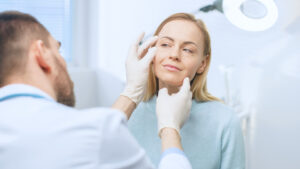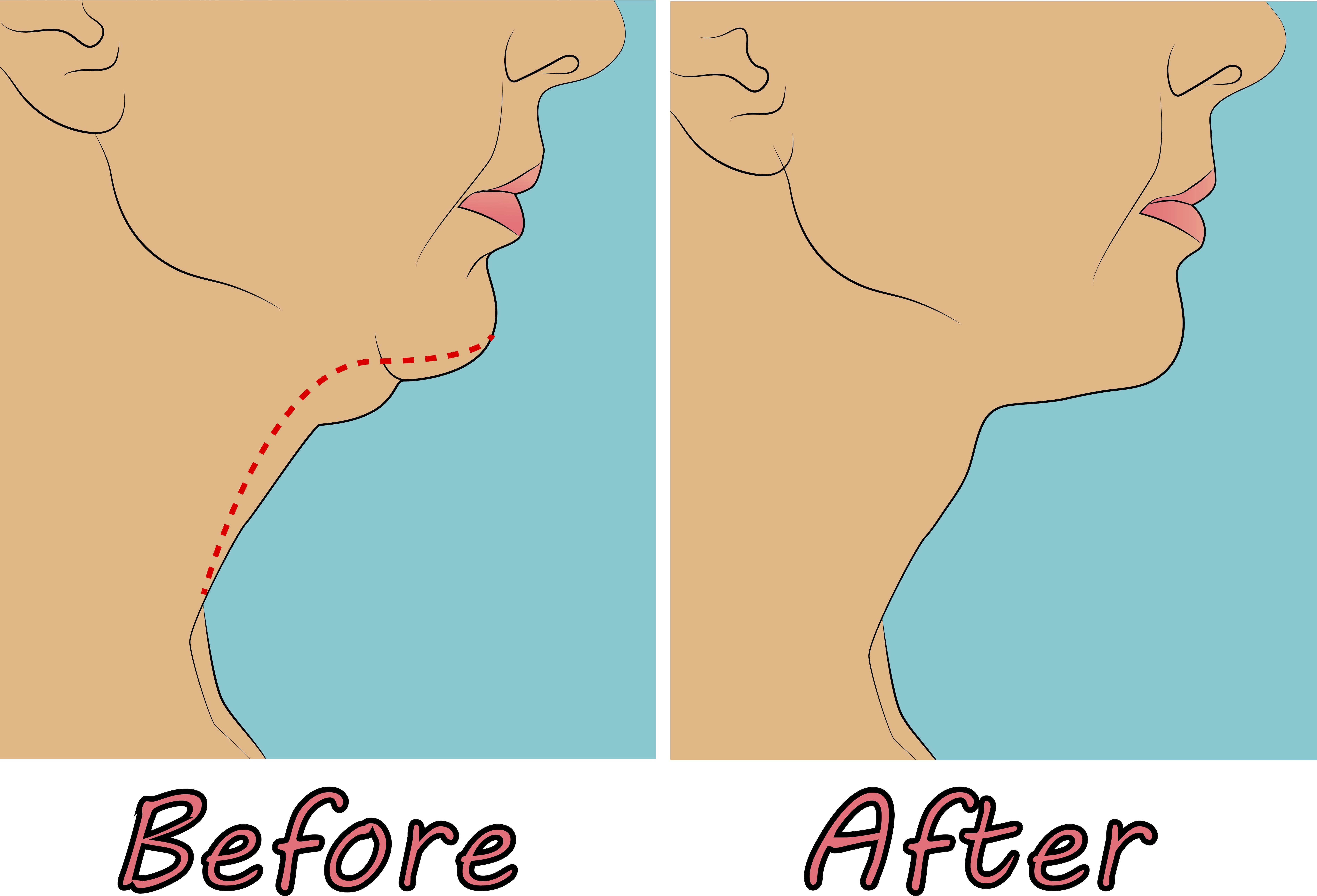
Dr. Menachof, MD, FACS has performed thousands of facial plastic surgery procedures in over 20 years of experience. He has been recognized as a Fellow by multiple academies, named one of America’s Top Facial Plastic Surgeons continually since 2003 and is featured in multiple national publications.
While there are many possible symptoms you may experience after a facelift, some can be more severe than others. You should expect swelling and bruising after your facial procedure, but if you notice any abnormality on the skin’s surface or intense pain underneath the incision, it’s important to consult your doctor right away. One of these rare side effects could be skin necrosis.
What is Skin Necrosis?
Skin necrosis occurs when there is not enough blood and oxygen flowing to a specific tissue region, causing that tissue to die. This condition is rare, with only a two-to-three percent chance of skin necrosis after a facelift. However, if you are a smoker or have a protein C or S deficiency, your risk of skin necrosis is higher.
Skin necrosis is one of the most common complications after a facelift for smokers. One in ten smokers tends to experience skin necrosis after a facial procedure. Nicotine interferes with the healing process and slows down circulation of the blood to the wound. Patients with protein C or S deficiencies are also at risk of developing skin necrosis because protein C interferes with the formation of blood clots — another key component in the healing process.
 What Causes Skin Necrosis?
What Causes Skin Necrosis?
Skin necrosis typically develops during the first few weeks following the procedure. Once necrosis starts, it cannot be reversed. But, the earlier the diagnosis, the sooner you can take steps to prevent the necrosis from spreading. Skin necrosis can be caused by hematomas or seromas: collections of blood or fluid that form under the skin. These pockets put pressure on the blood vessels under the skin, and decrease circulation to the tissue. Hematomas and seromas can be treated, but if they go unaddressed for too long, they can cause skin necrosis. Talk to your doctor about how to identify hematomas and seromas in their early stages.
Choose the Right Surgeon to Avoid Extra Risk
It’s important to choose a surgeon who is experienced and trustworthy. During a facial procedure, the skin can be separated from about 80% of its blood supply. If that skin is detached for too long, or if the skin is exposed to bacteria, necrosis can occur. Infections can stimulate swelling and tightness in the area, and cause skin necrosis. Avoid unnecessary risk by doing your research and choosing a surgeon you trust, who answers all of your pre-surgery questions.
Symptoms of Skin Necrosis
Patients with skin necrosis can experience intense pain and start to feel very ill. They will often have a rapid heart rate and low blood pressure. The affected area may look pale at first but will quickly become red and warm to the touch. In more advanced stages, the skin becomes violet and will have fluid-filled blisters. With time, as blood circulation decreases, the skin turns black, the area dies, the nerves stop working and the affected area loses sensation. At this point, there may be a decrease in the patient’s pain, but the skin may also start falling off.
If you sense early signs of skin necrosis, consult your doctor right away. A delay in diagnosis can worsen the condition and make damage irreversible.
How to Treat Skin Necrosis
Skin necrosis can be treated surgically and non-surgically. If you have been diagnosed with skin necrosis, your surgeon can cut away the dead skin, tissue or muscle with a scalpel. You may also be prescribed topical or oral antibiotics to help heal the tissue. Non-surgical methods are not as effective as tissue removal, since the removal procedure can prevent the spread of necrosis to other areas.
In some cases, skin necrosis can be confined to a small area and can heal without serious consequences, but in other instances, it can lead to scarring. You may consider having a scar revision, like skin grafting, to smooth and lessen the appearance of the scar. Using topical scar healing products can also help in these more minor cases.
If you have an area of your face or neck that has been affected by skin necrosis, you can conceal it with the use of makeup. However, please note it’s important that the affected area is properly healed before you apply makeup.
How to Prevent Skin Necrosis
There are some steps you can take to prevent skin necrosis. If you are a smoker, you should quit smoking for at least two to three weeks prior to your facial surgery, and for at least two to three weeks following your procedure. You should also try to avoid second-hand smoke during this time period.
After your procedure, make sure you wear comfortable, loose-fitting clothes — you don’t want any pressure on your head or neck! Refrain from any activity that will put pressure on your skin or interfere with your body’s circulation.
If you smoke, are diabetic, or have a protein C or S deficiency, be sure to let your surgeon know.
If you notice any signs of skin necrosis, prop yourself up with pillows and keep your head elevated, then call your doctor immediately. Avoid applying pressure to the affected area as this can worsen the condition.
Discuss Your Risk and Treatment Options with Your Surgeon
Bruising and swelling are normal after a facelift, but it’s important to watch closely for any signs of Necrosis. Skin necrosis is rare but needs to be diagnosed and treated in person by an experienced doctor. Follow up with an experienced, board-certified facial plastic surgeon to determine the right steps for you.
This blog was originally posted in August 2017 and has been republished in 2021 with updated information.




